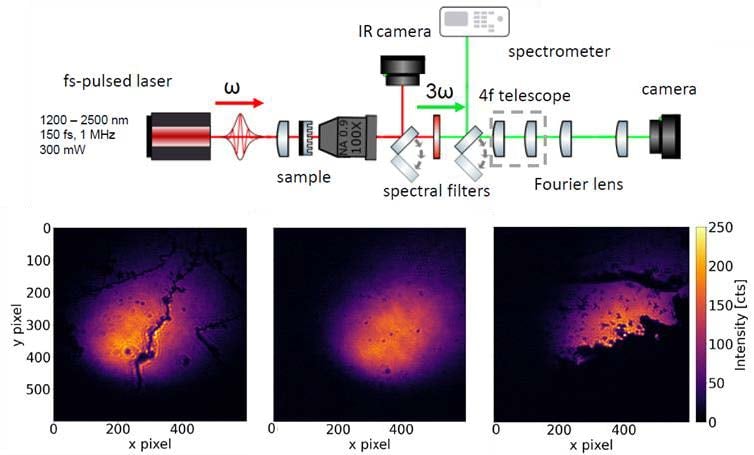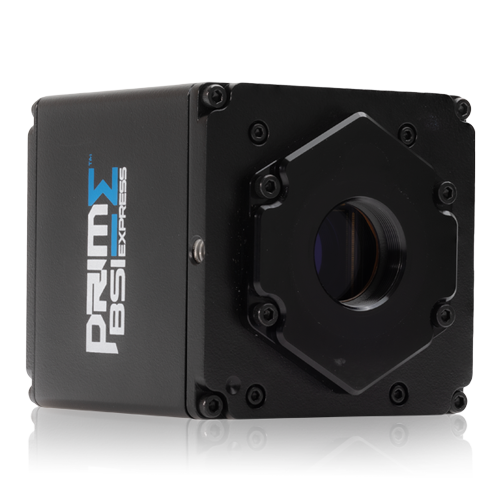High Harmonic Generation Metasurface Imaging
Dr. Femius Koenderink, Dr. Marko Kamp, Mr. Falco Bijloo
RESONANT NANOPHOTONICS GROUP, DEPARTMENT OF PHYSICS, AMOLF, NETHERLANDS
Background
Falco Bijloo is a PhD student in the nanophotonics group of Dr. Femius Koenderink at AMOLF, researching how to generate harmonics and make non-linear metasurfaces.
Mr. Bijloo told us more, “Metasurfaces are basically nano-patterned surfaces, and we build up a substrate with very thin nano-resonators on top, and this is the metasurface consisting of meta-atoms. With these metasurfaces can make lenses that are half a micron thick, or capture certain wavelengths of light and enhance them to generate second and third level harmonics.”
“We have a femtosecond pulse laser at 1200-2500 nm that hits the metasurface sample, we then have a collection objective in transmission and an infrared camera to capture at 1500 nm, we require another visible light or UV camera to capture the harmonics, which can be down to 500 nm at the third harmonic, or further into the UV at greater harmonics.”
“My research is about what kind of photonic and non-photonic processes are happening in these nanostructured metasurfaces, we need to image at a wide range of wavelengths.”

Figure 1: The top schematic shows the third harmonic generation Fourier microscope light path, including an IR
camera, spectrometer, and the Prime BSI Express sCMOS camera on the far right for the harmonics. The bottom
images are the second harmonic generation inspection of 2D materials taken with the Prime BSI Express.
Challenge
Mr. Bijloo described the challenges he faces, “The signal drops down a few orders of magnitude per harmonic, I think the conversion efficiency is 1×10-7 for the third harmonic, and we are interested in even higher harmonics. While we pump an intense amount of energy into the system the harmonics are very low signal and we need a sensitive camera to capture the photons.”
“For some experiments, we want to use an initial wavelength of 650 nm, this means the second harmonic is around 320 nm and that is really into the UV, which we can’t capture with our other cameras. We need a broad OE curve to capture several harmonics in the visible and UV.”
This application requires sensitivity above all, needing a camera with low noise levels and a high quantum efficiency across a broad range of wavelengths, particularly the UV and visible regions.
The reason we chose [the Prime BSI Express] is because of the large part of the sensitivity in the UV, it was easy to set up on our system and it’s a big improvement for us.
Mr Falco Bijloo
Solution
The Prime BSI Express CMOS camera is an ideal solution for this application, featuring ultra-high sensitivity thanks to a consistently low read noise (one electron or less in CMS mode) and a near-perfect 95% quantum efficiency peak 500 nm, stretching from 200-1100 nm, covering the UV, visible and near-infrared regions.
Mr Bijloo told us about his experiences with the Prime BSI Express, “The reason we chose this camera is that a large part of the sensitivity is into the UV. We needed a very broad OE curve to capture not only the main wavelength, but several harmonics worth. Our previous camera didn’t capture UV light and that is the most important part of the spectrum for us.”
“I enjoy using the camera, it was easy to set up on our system and it’s a big improvement for us.”
